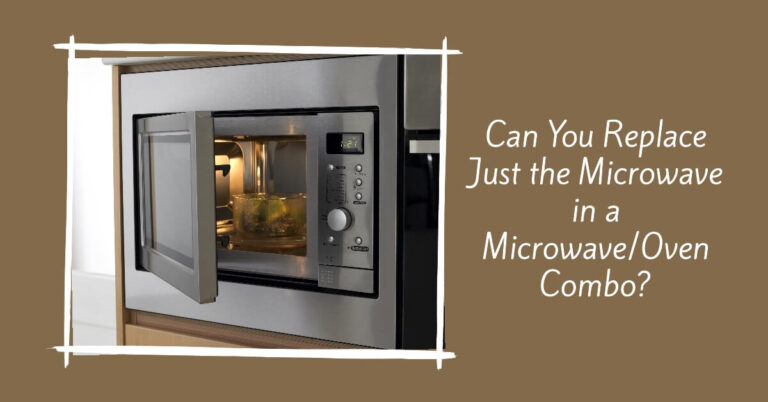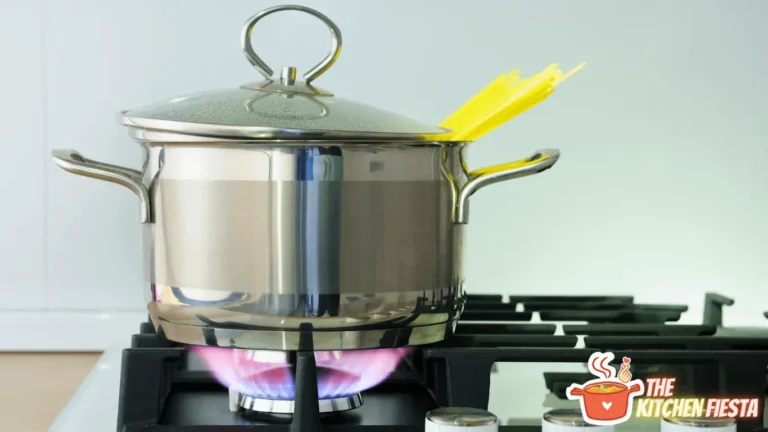Who Installs Microwave Ovens and How Much Does It Cost?

Kitchen appliances like microwaves are essential in most homes today. We use them to quickly heat up leftovers, cook frozen foods, and prepare snacks in a fraction of the time of conventional ovens. But what happens when you need a new microwave oven installed in your kitchen?
Should you hire an appliance repair technician, handyman, or try tackling a microwave installation yourself?
The answer depends on your skill level, the type of microwave, and your budget. Professional installation averages $149-190, though costs vary based on location and complexity .
In this comprehensive guide, we’ll cover:
- The pros and cons of DIY microwave installation
- Types of professionals who handle microwave installation
- Average costs for installation services
- Key steps for installing different microwave types
- How to choose the right installer
- Frequently asked questions about microwave installation
- Top-rated local microwave installers near you
Let’s start by looking at the basics of installing a new microwave oven in your kitchen.
Can You Install a Microwave Oven Yourself?
Installing a countertop microwave is generally considered an easier DIY project that homeowners can tackle themselves. The basic process involves:
- Selecting a location with proper clearance and electrical connections
- Securing the microwave to the counter or wall if needed
- Plugging in the power cord and testing operation
However, freestanding and over-the-range (OTR) microwaves require more skill to install properly:
- OTRs need to be placed near an existing vent and may require ducting
- Built-in and enclosed microwaves require cutting cabinetry
- Hardwired electrical connections must be handled safely
Microwave installation requires:
- Basic electrical knowledge
- Carpentry skills for cabinetry
- Following complicated instructions
- Moving heavy appliances
Without proper DIY experience, you risk:
- Damaging your new microwave
- Creating hazards like exposed wires
- Voiding the product warranty
In most cases, microwave oven installation is best left to appliance repair experts. Their experience and tools help ensure:
- Proper ventilation, ducting, and electrical hookups
- A secure fit within your existing cabinetry
- No damage to the appliance or your home
Now let’s look at the types of professionals who can handle this job.
Who Typically Installs Microwaves?
You have several options when hiring an appliance installer for your new microwave oven:
- Handymen – General contractors who offer a range of basic home installation and repair services.
- Appliance installers – Specialists who focus on major home appliances like dishwashers, dryers, and microwaves.
- Retailers – Stores like Best Buy, Home Depot, and Lowe’s that sell appliances provide installation services.
- Third party installers – Independent technicians hired through third party installation services.
- Property managers – For rental units, property managers will arrange installation of new microwaves.
- Specialized contractors – Electricians or carpenters might be needed for built-in or commercial microwaves.
For basic countertop microwave installation, a handyman or appliance tech can get the job done.
But for over-the-range or built-in microwave installation, we recommend appliance installers with specific experience handling these types of projects. Their expertise helps avoid issues like:
- Improper ducting or ventilation
- Damage to cabinetry when cutting to fit
- Errors in electrical hookups and connections
Always verify licensing, insurance, and read reviews before choosing an installer. Reputable retailers and third party services often provide the most professional installation services.
Now let’s look at typical costs for professional microwave installation.
How Much Does Microwave Installation Cost?
Microwave installation costs range from $100-$400 on average nationally :
- Basic countertop microwave: $50-$320
- Over-the-range microwave: $100-$570
- Built-in or enclosed microwave: $290-$5,000
Here are some of the factors that affect the total installation cost:
- Type of microwave – More complex models cost more to install
- Location – Prices are higher in areas like NYC or San Francisco
- Additional electrical work needed – Hardwiring, outlet repairs, or adding an electrical outlet add cost
- Ducting and venting – Proper venting for over-the-range or built-in models with exhaust fans takes time
- Cabinet modifications – Altering cabinetry for over-the-range or built-in models requires carpentry
You may also incur additional fees for:
- Old appliance disposal and haul away
- Travel costs if you live far from installer’s service area
- Off-hours or weekend scheduling
Many retailers include free delivery and basic installation when you purchase the microwave directly through them. But extra charges may apply for complex installations requiring electrical work or cabinet modifications.
Third party installation services allow you to shop around for the best deal on the appliance itself, then hire an affordable installer separately.
Okay, now that we’ve covered the basics, let’s go through key steps for installing the most common microwave types.
How to Install a Countertop Microwave?
Choose an Appropriate Location
- Allow proper clearance around vent openings for airflow. Most require at least 3 inches clearance.
- Place near an grounded electrical outlet. Avoid using an extension cord.
- Keep away from edge of counters for stability and to prevent tip overs.
Secure the Microwave
- For mobility, you can simply place the microwave on the countertop.
- To secure it, use mounting brackets to attach to a wall stud or the bottom of a cabinet.
Plug In and Connect Power
- Connect the power cord to a properly grounded 120V electrical outlet.
- Never remove the grounding prong from the power cord.
- Try to avoid using an extension cord if possible. If one is required, use a heavy duty 14 gauge cord.
Test Operation
- Once powered on, perform a quick test by heating a cup of water.
- Verify proper ventilation by feeling for airflow at the vent openings.
- Check for stable placement and no rocking on the countertop.
And your new countertop microwave is installed! This basic process works for most freestanding portable models. Next we’ll look at installing over-the-range and built-in microwaves.
How to Install an Over-the-Range Microwave?
Installing an over-the-range (OTR) microwave is more complex and typically requires professional help:
Choose a Good Mounting Location
- It must be installed near an existing range hood vent for proper ventilation.
- Make sure there is sufficient cabinet space, typically 1.5 to 2 feet deep.
- The bottom of the cabinet must be able to bear the weight of the microwave, which can be over 75 pounds.
Create an Opening
- Remove existing range hood vent first.
- Cut an opening in the bottom of the cabinet to create space for the microwave. Follow the manufacturer’s instructions for the exact size.
- Try to minimize required cabinet modifications for a cleaner installation.
Attach Mounting Bracket
- Secure a mounting bracket provided with the OTR microwave to the inside of the cabinet. This provides support.
- Use appropriate hardware designed for bearing heavy loads. Don’t rely solely on drywall anchors.
Install Venting and Ductwork
- Attach one end of the venting duct to the outlet on top of the microwave.
- Connect the other end to your existing ductwork leading outside.
- Follow all manufacturer guidelines for proper ducting. Improper venting can lead to serious issues.
Make Electrical Connections
- OTR microwaves usually require direct wiring rather than just a plug.
- Use appropriate gauge wiring and follow electrical code.
- A licensed electrician is highly recommended for this step.
Mount and Secure Microwave
- Carefully lift the microwave into place, engaging it with the mounting bracket. Take care not to damage the surrounding cabinetry.
- Open the microwave door to access interior mounting holes once in place.
- Then securely screw into the bracket using washers and screws provided.
This entire process often takes 2-3 hours for an experienced installer. Proper measurements, venting, electrical work, and carpentry skills are needed to avoid issues.
How to Install a Built-In Microwave?
For a seamless built-in look, follow this process to install an enclosed microwave:
Choose Installation Site
- Consider an upper cabinet location near an outlet and existing venting.
- Make sure the cabinet and surrounding walls can bear the weight.
- There should be adequate clearance around the microwave for ventilation.
Cut Out Cabinet Opening
- Remove cabinet doors and shelves from the install location.
- Following manufacturer specs, carefully cut out the required opening. Take into account the microwave trim kit.
- File down any rough edges to allow the microwave to slide in smoothly.
Install Trim Kit
- Attach the trim kit to the microwave using provided hardware and screws. It should seamlessly fill the gap between the appliance and cabinetry.
- Slide the microwave into the opening to test the fit. Remove it to proceed with the rest of installation.
Create Electrical Connection
- Use appropriate gauge wiring to connect to a grounded outlet or directly wire to a dedicated circuit.
- Hire an electrician if you do not feel comfortable handling electrical wiring.
Mount the Microwave
- Slide the microwave back into the cabinet cutout.
- Open the door to access interior screw holes. Securely screw into surrounding cabinet walls using provided hardware.
- Attach trim kit to cabinet face for a built-in flush finish.
Built-in microwave installation is best left to trained appliance installers or carpenters. The cabinetry and electrical work required takes skill, patience, and the proper tools.
How to Choose the Right Microwave Installer?
Follow these tips to find the best installer for your new microwave:
- Check for proper licensing and insurance – This protects against property damage.
- Read online reviews – Customers often share experiences with local appliance installers.
- Ask about their experience – Specifically with installing your type of microwave.
- Get a detailed written estimate – Breaking down parts, labor, fees, and taxes.
- Make sure they offer old appliance removal – Haul away and recycling of your old microwave.
- Inquire about warranties – Good installers often guarantee their labor.
- Go with a reputable national or local brand – Like Best Buy, Puls, Handy, or a referred local handyman.
- Schedule a home assessment – To determine complexity and customize the installation.
Doing a bit of research to find the right installer for your needs helps ensure your satisfaction.
Frequently Asked Questions about Microwave Installation
Here are some of the most common questions homeowners have about installing a new microwave oven:
Do I really need professional installation?
For countertop models, you can often handle installation yourself. But we recommended hiring a technician for over-the-range, built-in, or commercial microwaves.
How long does it take to install a microwave oven?
A basic countertop microwave can be installed in under an hour. More complex installations average 2-3 hours.
Can I install a microwave over my stove?
Yes, microwaves designed to be installed above the range require ventilation. This does require professional installation in most cases.
Is it cheaper to install my own microwave?
Possibly, if you are comfortable with all the electrical, carpentry, and ducting work involved. But any mistakes or appliance damage won’t be covered under warranty.
What if I don’t have an outlet for my new microwave?
You can either hire an electrician to add a properly grounded outlet, or have the appliance directly hardwired.
Will installation technicians haul away my old microwave?
Responsible installers will remove and recycle your old appliance when installing a new microwave. Just ask when booking.
What are signs I need professional help?
If you lack confidence in your electrical or carpentry skills, that’s a sign to call a professional. Dangerous mishaps can occur.
Asking questions upfront ensures your installation goes smoothly and safely. Let’s wrap up with tips to avoid headaches.
5 Tips for Hassle-Free Professional Microwave Installation
Follow these tips when having your new microwave oven installed:
- Measure carefully – Double check you have adequate room and venting for the microwave type and model selected.
- Keep the area clear – Remove objects from the surrounding countertop or cabinet before installation day.
- Clean cooking surfaces – Installers will refuse service if surfaces like stoves have built up grease.
- Be onsite for installation – To answer any questions and test operation. Schedule accordingly.
- Inspect carefully afterwards – Ensure microwave is clean, level, operating properly, and securely installed before technicians leave.
Taking the time to properly prepare and communicate with installers ensures the process goes smoothly.
Find Top-Rated Local Microwave Installers Near You
Once you’re ready to schedule professional installation, search for well reviewed installers near you. We recommend checking companies like:
- Best Buy – Offer installation on all appliances purchased through them
- Home Depot – Frequently run promotions on installation services
- Puls – Highly rated national installation service with background checked technicians
- Handy – Leading cleaning and handyman marketplace matching customers with local pros
- Danby – Specialize in dependable, affordable compact appliances
- Bosch – Renowned for high-end, reliable kitchen and laundry appliances
- Mr. Appliance – National franchise specializing in major appliance repair and installation
- Sears – Longtime appliance retailer with delivery and installation options
There are many competent local handymen, contractors, and technicians providing quality microwave installation services as well.
Just be sure to carefully check reviews, verify proper licensing and insurance, and get a written quote for parts, labor, and any other fees.
Conclusion
Installing a new microwave oven can feel like a daunting task. But with proper preparation and hiring professional appliance installers when needed, the process doesn’t have to be painful.
Carefully consider the complexity of your specific microwave and installation requirements. In most cases, letting experienced technicians handle the electrical, ducting, and carpentry work involved yields the best results.
This helps avoid safety hazards, costly mistakes, or damage to your new appliance. Take time to research reliable local microwave installers that offer fair pricing and quality work.
Following our tips will get your new microwave installed quickly, safely, and affordably. Then you can start enjoying the convenience of cooking and reheating foods at the press of a button.






